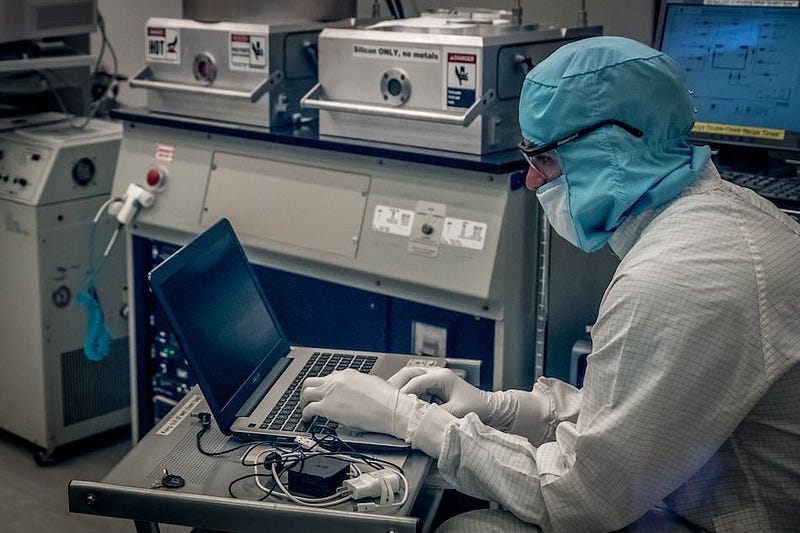By Alex Chay

On campus, professors are doing many different types of research. Some of these topics are consistent with what one thinks of when hearing the word “research”: mixing chemicals in test tubes or observing bacteria cells under a microscope. On the other hand, some professors are delving into topics that may baffle a casual observer. Professor Mikhail Kats’ research in various topics in the field of optics falls into the second category.
When optics is traditionally brought up, thoughts of lenses and ray diagrams are normally considered. However, Kats’ research is significantly different than just lenses and rays. Kats has only been on campus for about 10 months, having recently completed his PhD at Harvard and working as a post-doctoral scholar for another year. Professor Kats has several fields of interest within the field of optics upon which he focuses his research.
The first topic that Kats specializes in is thermal radiation. Thermal radiation is essentially light that is emitted from an object because of its elevated temperature. This radiation can be at different wavelengths depending on the temperature and material. For most common materials, the amount of emitted power increases as the temperature increases. However, Kats developed a material combination for which the amount of emitted power can decrease as the temperature increases. This discovery could be useful for a few practical applications.
Firstly, it could be used to cloak a person’s presence from thermal cameras, which has very practical military applications. Secondly, it can be used in temperature regulation. A satellite coated with this material would start to be very emissive and radiate more waves when it gets too hot, and then become less emissive after it cools itself down. This method of cooling is very advantageous because it eliminates the need for complicated circuitry.
The second topic that Kats researches is a relatively new topic in optics called plasmonics. Plasmonics is essentially the guiding and controlling of light using metals. Normally in optics, metals cannot be used as optical components because they are opaque; so they are traditionally only used for reflecting light. However, light can be trapped along the surface of a metal as long as the surface is patterned in a specific way, and from there, the light can be manipulated. This field is called plasmonics because the free electrons within the metal act as a plasma. One application of plasmonics is to confine light at visible frequencies into nanoscale volumes. This increases the intensity of the light, which in turn increases the efficiency of various optical processes. In turn, unfavorable processes that are difficult to observe naturally become more favorable. A practical example of this is the solar cell. Normally a solar cell requires a relatively thick layer of semiconductor material to absorb all of the light that falls on it. However, using plasmonics, resonant structures can be built into the solar cell, which enhance the absorption, even with very thin layers of material. Plasmonics, despite being a new field, has many practical uses, many of which are being researched by Kats.
Kats does other research in different fields of optics beyond what has been highlighted. He grew to be interested in optics for many reasons. When he was in college, Kats took a class in optics. “I learned things that I thought were science fiction,” Kats says. For example, one optical process traps and moves particles using light, which to Kats sounded exactly like a tractor beam. He found optics to be very interesting and practical, which drew him to the field.
Although light is very well understood and has been for well over a century, new discoveries in optics are still being made to this day. “Optics touches everything and has applications in almost every field,” Kats says. Despite this, he has been able to carve out his own niche. “Even though the laws [of optics] were written down over 150 years ago, they describe an almost impossibly large range of phenomena and potential technologies that we are still inventing and discovering to this day, and will be for a very long time,” Kats says. “And that is very exciting.”
